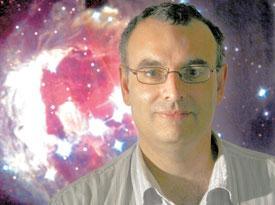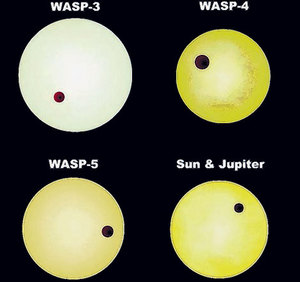The extra-solar planets were spotted by high-tech "WASP" cameras on the Canary Islands and South Africa during a six month period.

|
| ©Unknown |
| Queen's scientist Dr Don Pollacco says the Belfast-built cameras have sparked a planet-finding production line |
The discovery has been hailed a "triumph" for European astronomy and will formally be announced by the Royal Astronomical Society at the National Astronomy Meeting held in Belfast today.
The findings are the latest to come from the successful Wide Area Search for Planets project (SuperWASP) launched in 2004.
Scientists at Queen's developed the pioneering WASP camera which has revolutionised astronomy and increased the frequency with which planets are discovered.
Under the SuperWASP method two sets of cameras work as robots surveying a large area of the sky.
The cameras look for and record transits - where a planet passes directly in front of a star, blocking its light and making it appear fainter.

|
| ©Unknown |
| The size of three of the new planets and their suns shown in relation to our own sun and Jupiter |
Astronomers check the cameras for transits and then deduce the size and mass of each new planet.
Prior to the WASPs, scientists had to study each star for several months which led to fewer discoveries.
Most of the latest discoveries were made through cameras on La Palma in the Canaries - a project led by Dr Don Pollacco of the Astrophysics Research Centre in the School of Mathematics and Physics at Queen's.
Dr Pollacco said: "SuperWASP is now a planet-finding production line and will revolutionise the detection of large planets and our understanding of how they were formed.
"It's a great triumph for European astronomers.
"Queen's and the Particle Physics and Astronomy Research Council funded the first SuperWASP on La Palma.
"The camera was designed and built at Queen's."
A total of 45 planets have now been discovered by the transit system and SuperWASP cameras have found 15 of those.
The surface temperature on one of the new planets is thought to reach of 2,300 degrees celsius.
As many as 650 of the world's leading scientists will attend the conference at Queen's this week to hear more about SuperWASP's success.



Reader Comments
to our Newsletter